When you begin to learn about chess endings, one of the first concepts you encounter is the opposition.
This fairly simple concept is extremely important to understand, as it is fundamental to most King and Pawn endings and can mean the difference between a win and a draw (or a loss!) in many of them.
Definition of “opposition”
First, we need to define the term. The Kings stand in opposition when there is one square between them and they stand on a vertical, horizontal, or diagonal line. Here is an example of the simplest form of opposition.
As you can see, there is one square between the Kings, and the Kings stand on a vertical line. This is called the direct vertical opposition. If you imagine the Black King standing on f3 instead of d5, the Kings would be in direct horizontal opposition, and if the Black King were on f5, they would be in diagonal opposition.
Which side has the opposition?
In chess, we often think about the importance of tempos, and the advantage that comes from having the opportunity to move.
Not so with the opposition! When the Kings stand in opposition, one side has a distinct advantage. Usually — but not always — the side with the advantage is the side that does not have the move. Usually it is an advantage for you if your opponent must move.
In the diagram above, if it were Black’s turn to move, then White would be said to “have the opposition,” and White would have the advantage. By the same token, if White is on the move, Black is said to have the opposition, and Black has the advantage.
The consequences of the opposition
There are some extremely interesting — and important — consequences of having the opposition.
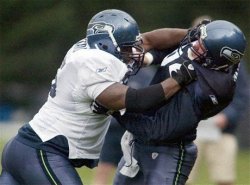 First, if you have the opposition, you can block your opponent from getting behind your King. Whole sections of the board can be denied to your opponent. The opposition can be an extremely important defensive resource. When thinking of the opposition as a defensive resource, think of your King like an offensive lineman in football. He blocks the opponent from getting behind the line.
First, if you have the opposition, you can block your opponent from getting behind your King. Whole sections of the board can be denied to your opponent. The opposition can be an extremely important defensive resource. When thinking of the opposition as a defensive resource, think of your King like an offensive lineman in football. He blocks the opponent from getting behind the line.
A good example of this is seen in the following diagram.
Here, in order to guarantee a win, the White King must get inside the box outlined in the diagram. Black, having the move, can seize the opposition by moving Ke7. The White King can’t make any progress toward the box, he can only move to one side or the other … Kg8 or Kg6.
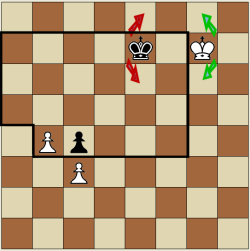 Whichever way White moves, Black can continue to block the White King by moving in the same direction to maintain the opposition: …Ke8 or …Ke6.
Whichever way White moves, Black can continue to block the White King by moving in the same direction to maintain the opposition: …Ke8 or …Ke6.
Using the opposition as an offensive weapon
The opposition can also be used offensively. If you have the opposition, you can force your King through the enemy defense to get to any part of the board. That’s because when you have the opposition, your opponent has to move backward or to one side or the other. If your opponent moves to one side, you have the opportunity to outflank him on the other side.
Here’s a good example of an important outflanking maneuver in a King and Pawn ending.
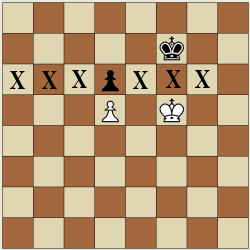 In this ending, White can be sure of a win if he can reach one of the squares marked with an “X”. If it’s White’s move, then Black has the opposition, and can use it defensively to block White from reaching one of those critical squares. For example, if White moves 1.Kg5, Black responds 1… Kg7.
In this ending, White can be sure of a win if he can reach one of the squares marked with an “X”. If it’s White’s move, then Black has the opposition, and can use it defensively to block White from reaching one of those critical squares. For example, if White moves 1.Kg5, Black responds 1… Kg7.
But if it is Black’s move, then White can use the opposition offensively to outflank his opponent and get to a critical square. So if Black moves 1… Kg7, then White outflanks to the left, moving 2.Ke6 and capturing the Black pawn on the next move. After capturing the Pawn, the White King will go to c7 and escort his Pawn to the promotion square.
On the other hand, if Black moves 1… Ke7, then White outflanks to the right, moving Kg6, and reaching another one of the critical squares. Black will not be able to prevent White from capturing the Black pawn and winning the game. Here’s how this game could end, both sides using the opposition for offense and defense:
- 1… Ke7
- 2.Kg6 … (Note that White’s King is now sitting on one of the critical squares marked in the diagram above.)
- 2… Ke8
- 3.Kf6 Kd7 (trying to prevent White’s King from reaching the Black pawn)
- 4.Kf7! …(Horizontal opposition!)
- 4… Kd8
- 5.Ke6 Kc7
- 6.Ke7! … (horizontal opposition again! Note how White has used the opposition offensively to force his way through to attack the Black pawn.)
- 6… Kc8
- 7.Kxd6 Kd8 (using the opposition defensively)
- 8.Ke6 Ke8
- 9.d6! … (move the pawn to the 6th rank only when it gives you the opposition!)
- 9… Kd8
- 10.d7 …
- 10… Kc7
- 10.Ke7 and Black won’t be able to prevent the Pawn from Queening.
I’ll have more articles about the opposition in coming days … so stay tuned.

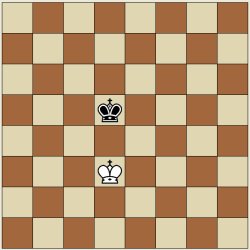
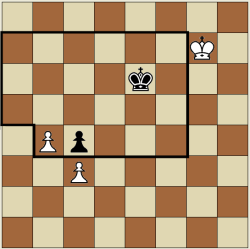
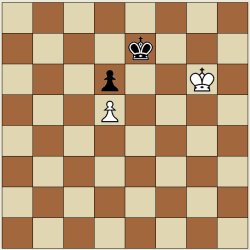
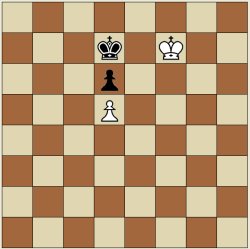
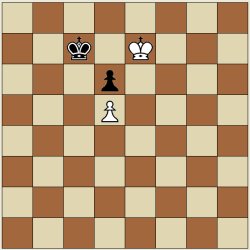
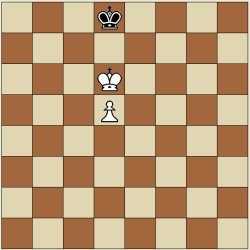
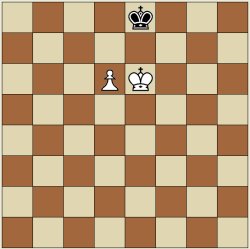
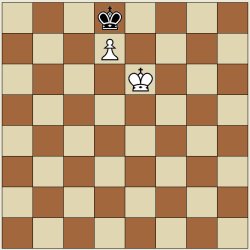
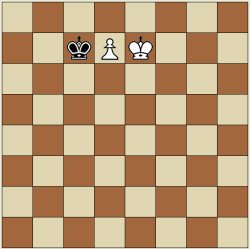
Finally understanding opposition,
Thank you
Like Mary Jo Anzel six years ago, I finally get it. Many thanks.